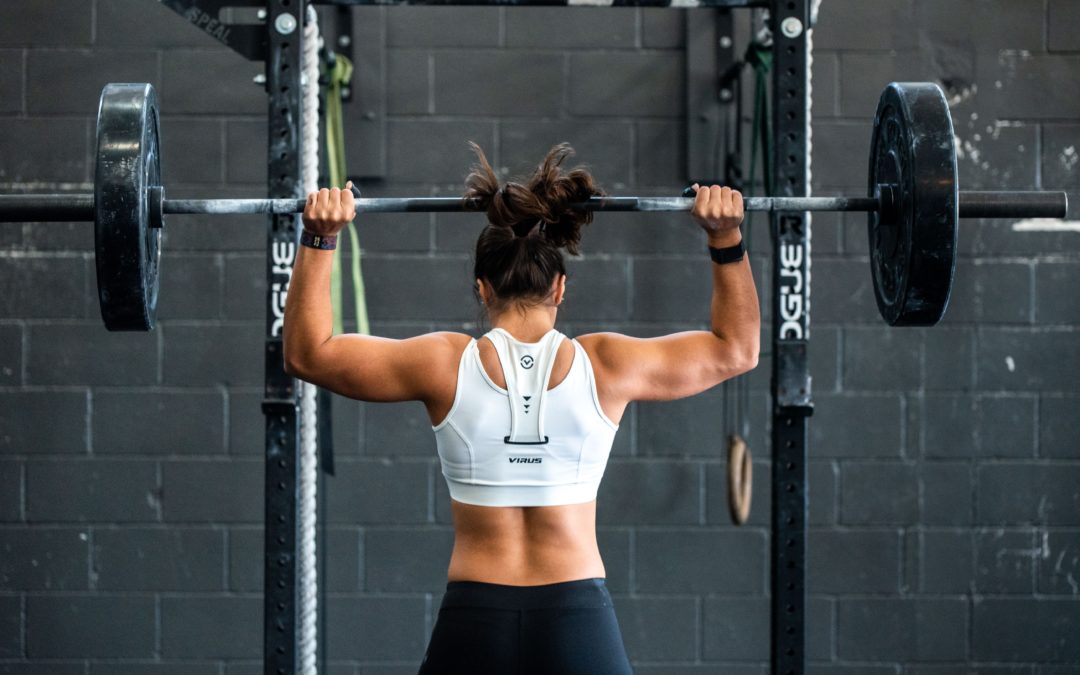What is the Overhead Press?
The overhead press is a simple exercise that any athlete can perform whether they are a beginner or a more advanced athlete. Unlike some other exercises such as the jerk or push press that require more coordination and instruction this can easily be implemented into any athlete’s exercise routine. The primary muscles targeted are the anterior deltoid, the upper trapezius, the triceps, and the clavicular (upper) fibers of the pectoralis major. Recruiting all of these muscles rather than isolating just one or a few muscles makes it a time efficient exercise. This exercise also places a large flexibility demand on the shoulders and thoracic spine to be performed correctly.
Why is the Overhead Press Important?
For strength sport athletes such as cross fitters, powerlifters, stongman competitors, and bodybuilders, the overhead press becomes a valuable and time-efficient exercise. Since the overhead press targets several muscles it allows an athlete to maximize his or her time training by developing strength gains in multiple body regions simultaneously. Furthermore, this exercise has the advantage of emulating the movement patterns required for these sports such as handstand presses, jerks, push-presses, and overhead squats. Another crucial element to any good exercise is its ability to progress in intensity. To promote muscle hypertrophy and enable an athlete to become stronger, a greater training intensity is needed. With an overhead press the load can easily be increased to allow this exercise to continually challenge the athlete as they progress through their exercise program.
This principle carries over to everyday life as well. Day to day activities are about muscles working together, not in isolation. So it makes sense that when we are training we should challenge whole muscle groups and strengthen in functional movement patterns. While we might not be lifting large amounts of weight overhead each day, activities such as washing our hair or reaching to get a cup from a tall cabinet require us to move through this overhead motion. Then when we have that one day we need to lift heavy boxes into the attic, or paint a wall, our body is ready for that stimulus.
Why is it common to experience shoulder pain with the Overhead Press?
The shoulder joint is a ball and socket joint that is made up of the humerus of the upper arm and the scapula (shoulder blade). When you lift your arm overhead, the scapula should rotate upwards by gliding over the ribs. The rotator cuff, which comprises of 4 muscles that run from the scapula to the humerus, maintains congruency between these two bones during the process. If you can imagine, we have the humerus and the thorax playing tug of war with the scapula. When any one side starts to become too dominant, it places us at risk for injury. For instance, if the scapula is not moving properly the muscles of the rotator cuff have to work much harder to get the arm overhead. Over time these muscles become overworked and get irritated which may lead to pain.
Athletes most often complain of pain at the front or outside of their shoulder when lifting overhead and pain when sleeping on the affected shoulder. Most commonly, the pain generator is one of the rotator cuff muscles or tendons. This may cause an athlete to have weakness with external rotation and abduction motions, they may have poor scapula or thoracic mobility, or have tight lats.
So what can you do about it?
#1 Respect the healing time!
Athletes are typically determined, and do not like to be sidelined from their sport. But you have to understand and manipulate a crucial component; TIME. When you scrape your knee you develop a scab. If you constantly pick at the scab it’s never going to get better. Similarly, if every time you lift overhead you feel pain, it means that the already irritated tissue is continuing to be aggravated without being allowed to heal. It becomes crucial to avoid activities that irritate or produce symptoms to allow your body time to heal. In the meanwhile, self massage is a great tool to use to bring blood flow to the injured tissue and loosen up the irritated muscles. You can use a lacrosse ball, foam roller, or just go and get a massage. See the videos below for reference.
Start with a lacrosse ball and find a trigger point on your pecs, RTC muscles or lateral delt, press and hold for 20 seconds before moving onto another trigger point. Other exercise options are shown below and can be incorporated during the healing process.
#2 Remedy your Impairments
- Flexibility
- This is also considered the QUANTITY of range of motion. Use the video below to improve flexibility in your shoulder.
-
Mobility
- This is referring to the QUALITY of your range of motion. Use the referenced video below to work on proper overhead mechanics! Make sure not to allow your thumbs to turn inwards, and try to keep your elbows under your wrists!
- Stability
- This refers to your strength throughout your range of motion. This is commonly most impaired at the end ranges of motion. Use the videos below to improve your shoulder stability!

